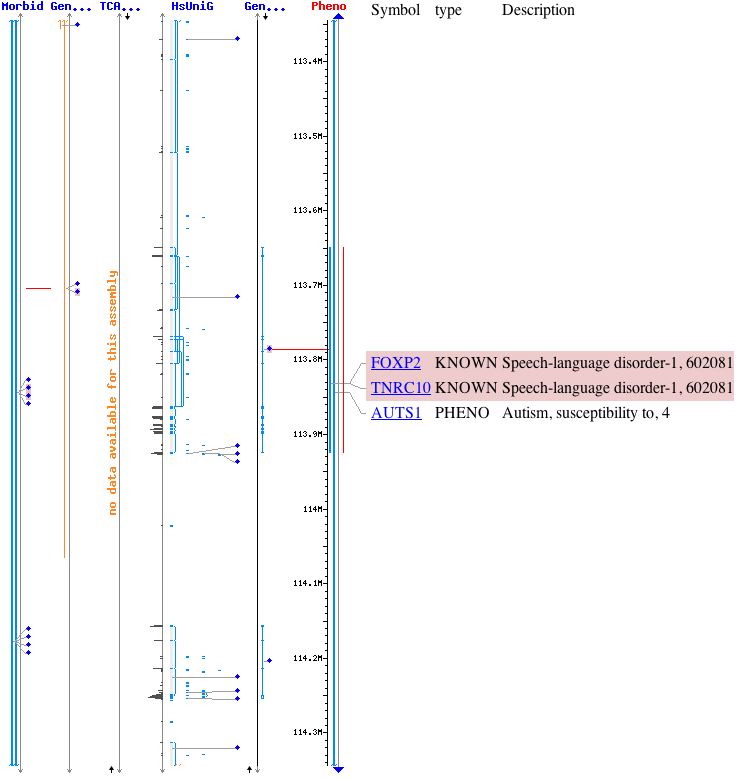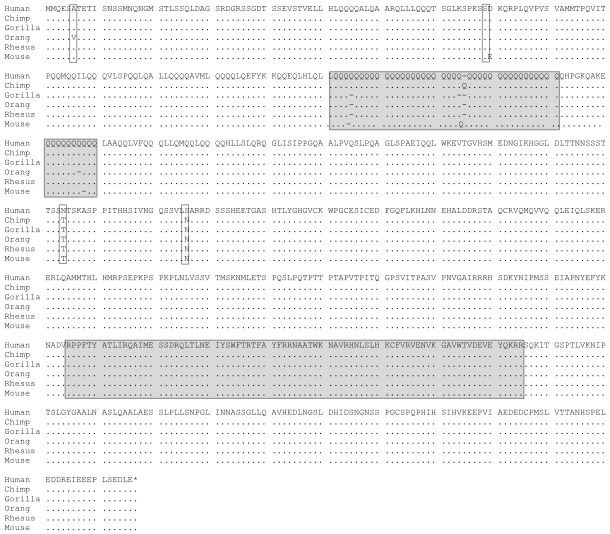This web page was produced as an assignment for an undergraduate course at Davidson College
"Language Gene" Discovered
Popular Press v. Scientific Literature

What if a gene involved in the development of language was present in other animals? Would humans then be able to directly communicate with animals using the same language? Image from IMDB.com. Permission pending
Popular Press Article: Click here to view article.
On August 14, 2002, BBC News Online published an article entitled, " First language gene discovered", in which it indicated that a team of British and German researchers had identified the first gene that was definitively related with human language. They determined that when this gene, FOXP2, is mutated, people suffer from a disorder that is characterized by serious language and grammar-learning abilities. The article also indicates that the scientists compared the versions of the FOXP2 gene in mice and several types of monkeys to the human version of the gene. In this study they found slight differences in the monkey and mice versions of the gene compared to humans. This mutation in two nucleotides of human DNA apparently happened nearly 200,000 years ago, and have allowed speech. The researchers predict that the product of the gene is related to an ability to control facial movements. The article also mentions that one of the authors of the report says, " We don't think this is THE speech gene." and that they also expect from 10 to 1,000 other genes related to speech and language to be discovered.
Background on the FOXP2 Gene
The FOXP2 gene was actually isolated by Lai et al.(2001). It is located on chromosome 7q31 in humans. It's protein product is a transcription factor that contains a polyglutamine tract and a forkhead DNA binding domain (OMIM, 2003).

Figure 1: Graphic of chromosome 7 showing the location of the FOXP2 gene. Image from NCBI's human map viewer.
Scientific Journal Article
Enard et al., 2002 did further genetic analysis of FOXP2, a gene that had actually been discovered by Lai et al., 2001. Their study included the sequencing of cDNAs that encode FOXP2 protein in different species of monkeys and mice, and investigating the variation of the FOXP2 gene among humans.
After sequencing complementary DNA of FOXP2 protein in the chimpanzee, gorilla, rhesus macaque, orangutan and the mouse they compared them to human cDNA of FOXP2. They found two amino-acid positions in the mouse orthologue of the human FOXP2 protein. They found that out of 1,880 human-rodent gene pairs, FOXP2 is one of the 5% most conserved proteins. Among the chimpanzee, gorilla, and rhesus macaque's FOXP2 proteins, there are no differences in amino acid sequence with each other, one difference from the mouse, and two differences from the human protein. The FOXP2 protein orangutan differed from the mouse in two amino acids, and from the human in three amino acids. Enard et al. concluded that though the FOXP2 protein is highly conserved, two of the three amino-acid differences between humans and mice must have occurred on the human lineage after speciation between humans and the chimpanzee took place. After analysis of the FOXP2 protein structures for humans, chimpanzees, orangutans, and mice, they indicated that of these amino-acid changes on the human lineage, at least one is related to a functional change in the protein since the amino acid in humans can potentially be phosphorylated by protein kinase C which would create a minor change in the secondary structure of the protein.

Figure 2: Alignment of human, chimp, gorilla, orangutan, rhesus macaque, and mouse amino acid sequences of FOXP2 cDNA. The vertical boxes indicate differences among the species. Image from article(subscription required to view full-text article) in Nature. Permission pending.
The researchers found these results of a change in FOXP2's shape interesting because FOXP2 is the first gene known to be related to speech and language development, so they decided to investigate the variation of FOXP2 among modern humans. To test if the amino acids that comprise FOXP2 are polymorphic, they sequenced the chromosomal region where the two amino acid differences from chimpanzees are found, on exon 7 of the gene, from 22 people(44 chromosomes) from all 7 continents. Additionally they sequenced the same exon in 91 unrelated individuals(182 chromosomes) of predominantly European descent. Among these 226 sequenced chromosomes they found no amino-acid replacements in the two amino-acid variants that differs in human FOXP2 and chimpanzee FOXP2, suggesting that these variants are fixed in humans.
With the use of various statistical tests, the authors also estimated that the fixation of the two amino acid variants in the human population probably occurred around 200,000 years ago, which also corresponds with the known existence of anatomically modern humans.
Conclusion
I found the BBC's article to be relatively straightforward, and not as misleading as many other popular press articles I have read in the past giving news involving the discovery of a gene. This article specifically says that the authors of the scientific paper believe there to be many genes related to language and speech. While the article may not impress many in the scientific community because of its use of layman's terms for genetic words and for not detailing the methods the group used to analyze sequences and compare sequences of the FOXP2 gene among different genes, it does a good job of explaining what the scientists discovered about FOXP2 and the mutations it has undergone in different species without misleading readers by making oversimplified claims about the gene.
The scientific article is much more complex and detailed than the popular press version. It gives more specifics as to the genetic location of the amino acid variants among orangutan and human orthologues of FOXP2. It's discussion of the results from the sequencing procedures involves the use of several statistical tests to deduce when human FOXP2 underwent it's last two mutations, as the author's estimated 200,000 years ago.
Thus, each source is writing with different audiences in mind. The BBC article is obviously going to read be by more non-scientists than scientists, so less detail is used in it's description of Enard et al's discoveries. In contrast, the Nature Article is written for those familiar with scientific terminology and theories, so more use of details and methods are included to communicate the results. I would still recommend that one read the scientific journal's article (even if it is a review article of the original scientific paper), if one is capable of understanding most of such scientific vocabulary, because in converting the scientific paper's findings into everyday terms some facts may be lost or misconstrued by journalists within the popular press.
As for the discovery of a gene related to the development of language or speech skills I find it very intriguing. The fact that certain changes in FOXP2's stucture occurred around the time humans speciated from other primates seems to make logical sense as to why humans speak and chimps do not(though as noted I'm sure the reasons are more complex than the presence or absence of the human version of FOXP2. I would be predict that in the future more people with language development disorders will be genetically tested to try and determine if other genes aside from FOXP2 are related to language. Other intriguing factors related to the gene's discovery is the possibility to insert this gene into species besides humans, and if this would then allow humans to directly communicate with animals. Would the FOXP2 gene's, along with other potentially found language-related genes', presence in an organism's genetic material allow that organism to develop language and speech abilities? Are there other genes related to an organism's ability to think that are also necessary for one to speak? I'm sure, if deemed ethical, more investigation into these questions would take place in the scientific community, and if not at the very least it might just make for more believable situations in the plots of movies or television shows that involve animals capable of talking.
References
BBC Science News. 2002 Aug. 14. First language gene discovered. <http://news.bbc.co.uk/1/hi/sci/tech/2192969.stm> . Accessed 2004 Sept. 11.
Enard W, Przeworski M, Fisher SE, Lai CS, Wiebe V, Kitano T, Monaco AP, Paabo S. 2002. Molecular evolution of FOXP2, a gene involved in speech and language. Nature 418: 869-72.
Lai CS, Fisher SE, Hurst JA, Vargha-Khademm F, Monaco AP. 2001. A forkhead-domain gene is mutated in a severe speech and language disorder. Nature 413: 519-523.
[OMIM] Online Mendelian Inheritance in Man. 2003. FOXP2. <http://www.ncbi.nlm.nih.gov/entrez/dispomim.cgi?id=605317>. Accessed 2004 Sept. 11.
Questions, Comments? E-mail John